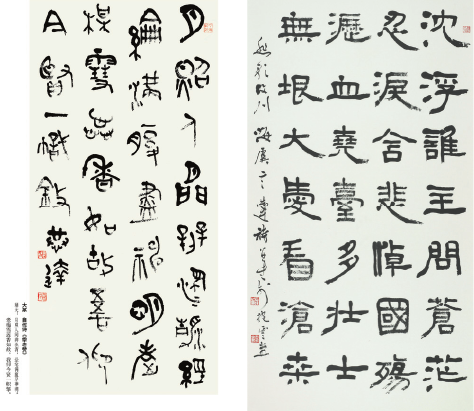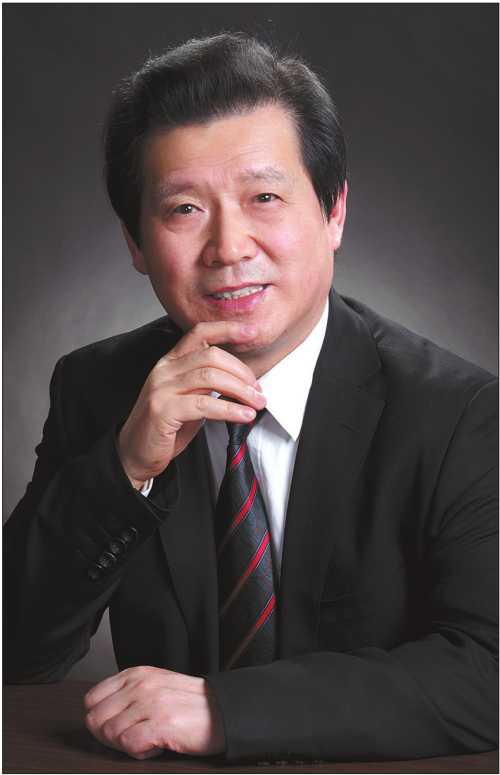
Pictured here are part of Yan's calligraphy works. The scroll (left) is the Zhuan style that retains the traces of pictograph and the one (right) represents the Li style that is more characteristic of modern Chinese words. While other creations on this page are in the Cao style.[China Daily]

In the eyes of Yan Gongda, calligraphy is more than just relics of the past but a link between the traditional and the modern.
"My work is steeped in tradition, but it is not conservative," the renowned contemporary calligrapher said. "I talk with the ancient everyday yet at the same time absorb in the fresh air of modern times."
Born in 1948 in Changshu, Jiangsu province, Yan is a direct descendant of Yan Yan, one of the 10 best students of ancient master Confucius more than 2,000 years ago.
Besides the influence by the heavy academic atmosphere in his family, the talented artist once studied under the calligraphy giant Sha Manweng.
He is now an expert in various styles of Chinese calligraphy, and in particular, famed for his work on the Zhuan, Li and Cao styles.
The Zhuan style retains the characteristics of pictograph and was popular between the Western Zhou Dynasty (c.11th century-771 BC) and Qin Dynasty (221-206 BC). Then it was often carved into animal bones, turtle shells and metal.
Evolving from the Zhuan, the Li's development reached its climax during the Eastern Han Dynasty (AD 25-220). In comparison, the new style became more like square characters that are used nowadays and thus more convenient to write.
The unrestrained Cao style breaks the conventional writing rules and highlights sweeping strokes and brief structure. It now has more aesthetic value than practice.
With its root deep into the rich tradition, Yan's creation especially in the three styles has reached a height that is exerting a strong influence on younger generations.
"Chinese calligraphy is not only an art of strokes but also a representation of the current times," he said.
"Looking back on history, we'll find that the classic works that are able to stand through centuries all reflect the thinking on the times then and promote humanity," he noted.
Close ties with the mainstream culture of the times enable the traditional art to have a new lease on life, he noted, adding that calligraphy creation calls for the characteristics of the times, traditions and personal style.
